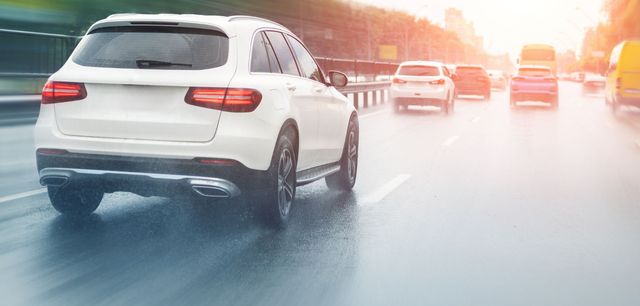The car of the future promises more safety: The networked vehicles of the future are set to respond to dangers at an early stage. Just how this can work is explained by Heiko Ehrich, head of the competence field of Electronic Systems & Car IT at TÜV NORD.
What does car-to-car communication actually mean?
Car-to-car communication is communication that takes place between vehicles – with the aim of sharing information that can be used for traffic control or to warn drivers of dangers. Here’s a possible scenario: On the motorway there’s been an accident or a traffic jam is building up. Vehicles in the immediate vicinity recognise this situation on the basis of their existing sensors and send the information to other vehicles in the area. Cars warned in this way can in turn respond immediately and, for example, alert the driver or calculate an alternative route. It gets more complicated with car-to-X communication, which also includes networking with infrastructure alongside communication between vehicles. A possibility here, for instance, is a smarter traffic light control system that adapts to the volume of traffic on the basis of the vehicle information collected.
When will networked cars become reality?
At the moment, appropriate communication technologies are being developed that will meet the needs of vehicle networking. A version of the Wi-Fi standard is earmarked for use here that will enable the construction of ad-hoc vehicle networks within a radius of several hundred metres. An involved vehicle will take over the function of a router that forwards the data received to other vehicles. For the realisation of extensive vehicle-to-infrastructure communication, Wi-Fi-based communication can be combined with mobile communications technology, like, for example, the UMTS technology that we know from our smartphones. At the latest once ‘eCall’, the automatic emergency call system for vehicles, becomes compulsory for new vehicles, every new car will be required to have a mobile telephony interface. This could give an extra boost to the introduction of car-to-car applications.
What is TÜV NORD calling for?
We’re focusing intensively on the issue of cyber-security in vehicles, since wireless interfaces with the outside world offer potential for hacker attacks. Through manipulation of the data exchanged, false information can be fed in which might significantly affect traffic flow and road safety. TÜV NORD is advocating the establishment of uniform standards for the development and evaluation of security systems in vehicles.
YOU MAY ALSO LIKE
ABOUT HEIKO EHRICH
© Udo Geisler
Heiko Ehrich is responsible at TÜV NORD for the competence field of Electronic Systems and Car IT. He and his colleagues test electronic systems in vehicles, such as controllers, networks and system components. The team also reviews concepts for possible vulnerabilities and looks for ways to improve them.
What Heiko Ehrich wants for the car of the future is for the level of security required for the networking of vehicles to be in place. New approaches to the interaction between driver and vehicle should also be developed to increase the user-friendliness of networked vehicles.



